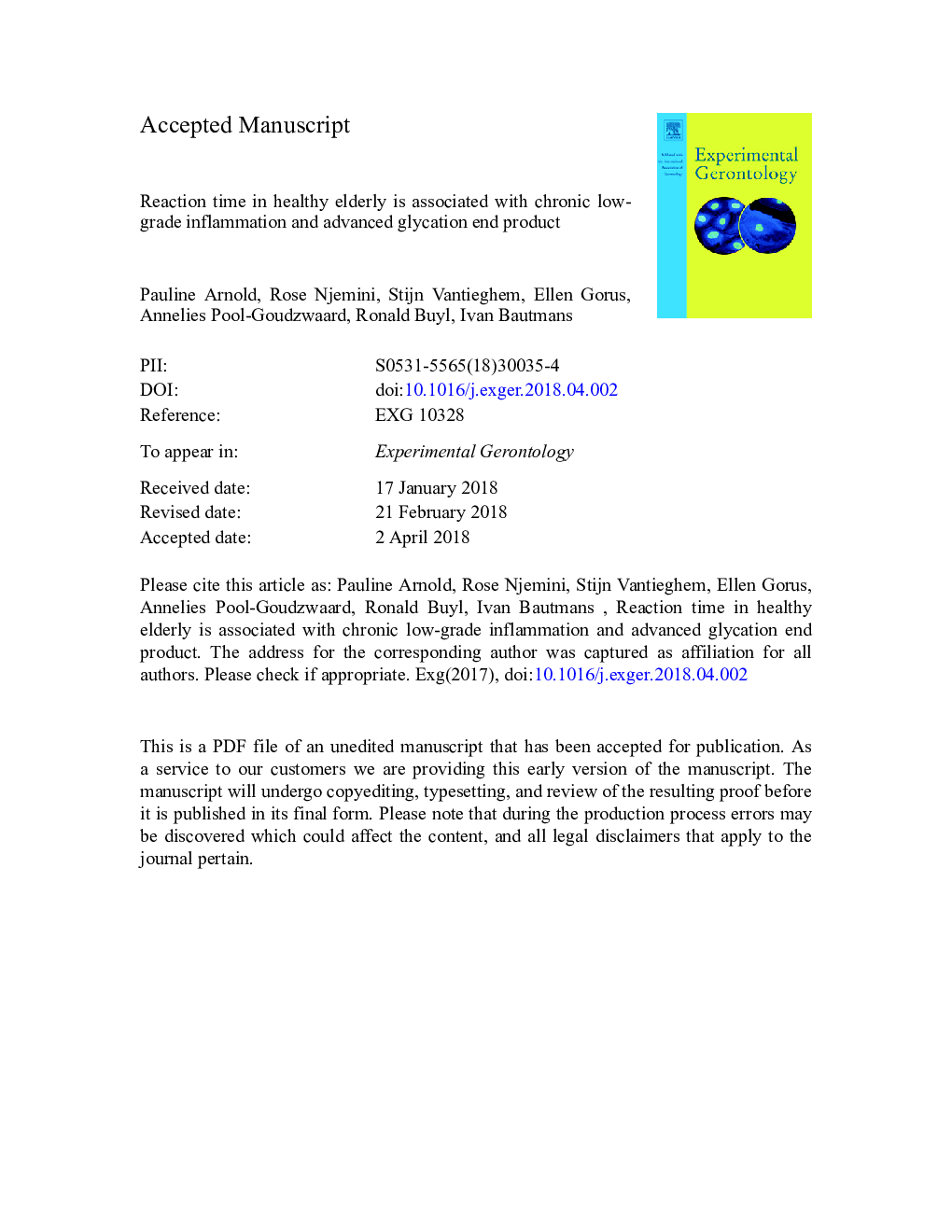| Article ID | Journal | Published Year | Pages | File Type |
|---|---|---|---|---|
| 8262218 | Experimental Gerontology | 2018 | 21 Pages |
Abstract
Chronic inflammation and Advanced Glycation End products (AGE) are associated with sarcopenia. Decreased voluntary muscle activation and increased antagonist coactivation can contribute to age-related muscle weakness. The influence of chronic inflammation and AGE in these neuromuscular mechanisms is not clear. We studied whether a relation exists between circulating levels of inflammatory cytokines and AGEs as well as the interplay between agonist and antagonist muscle activation. We studied 64 community-dwelling old subjects, during a maximal isometric voluntary contraction (MVC) and a reaction-time (RT) test of the upper limb. Twenty-five circulating inflammatory biomarkers were determined. Linear regression showed significant relationships between chronic inflammation and six muscle activation parameters. MIP-1β showed a significant negative relation with antagonist coactivation (during MVC) and antagonist muscle activity during pre-movement time (PMT) and movement time (MT) (during RT). A higher level of pentosidine (AGE) was predictive for a longer PMT. We conclude that in older relatively healthy persons antagonist muscle activation is influenced by chronic inflammation, contributing to age-related muscle weakness. Our results also suggest a mechanical and inflammatory influence of pentosidine in upper limb slowing of movement. These findings show novel insight in underlying mechanisms of age-related muscle weakness.
Related Topics
Life Sciences
Biochemistry, Genetics and Molecular Biology
Ageing
Authors
Pauline Arnold, Rose Njemini, Stijn Vantieghem, Ellen Gorus, Annelies Pool-Goudzwaard, Ronald Buyl, Ivan Bautmans,
